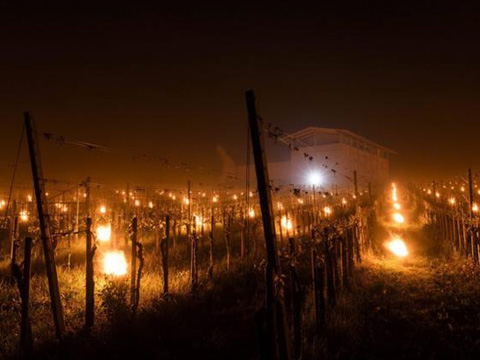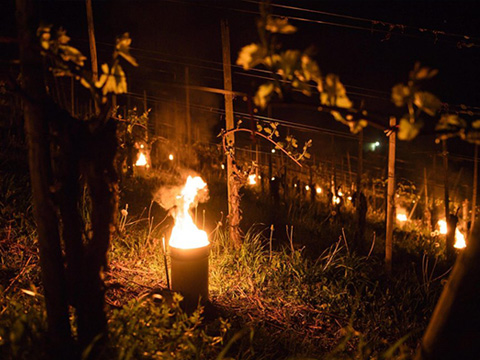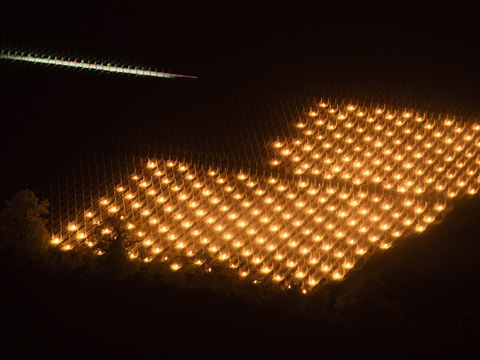The Essential Guide to Orchard Anti-Frost Candles
A single late-spring frost can nullify an entire season of hard work and investment. For orchard and vineyard owners globally, anti-frost candles are a proven line of defense against this "silent killer." However, purchasing a high-quality candle is only half the battle; the other half is using it scientifically and effectively. This guide combines product selection with in-field best practices to provide a truly professional and actionable frost protection strategy, ensuring every dollar you invest translates into reliable protection for your harvest.
.jpg)
Part 1: Selecting for Core Performance Metrics
This is the foundation of your purchase. A professional-grade candle must have:
-
Stable and Verifiable Heat Output: The basis for creating a thermal shield in your protection zone.
-
Accurate and Reliable Burn Time: It must be guaranteed to last the entire frost event (typically 8-10 hours). Premature burnout is an unacceptable failure.
Part 2: Scientific Placement Strategy & Usage Method (The Core Technology)
This is the core science that determines success or failure. Even the best candles are useless if placed incorrectly.
-
Principle of Action: Anti-frost candles do more than just "heat the air." Their primary mechanism is to generate radiant heat from numerous, evenly distributed sources. This directly warms the plant tissues (buds, flowers, and young fruit) while creating a protective " inversion layer" of warmer air above the orchard, which prevents colder air from sinking.
-
Placement Density: This is the most critical calculation and depends on the predicted severity of the frost.
-
Light to Moderate Frost (-2°C to -3°C): A density of 250-300 candles per hectare (approx. 100-120 per acre) is recommended.
-
Severe Frost (-4°C to -5°C): The density must be increased to 350-450 candles per hectare (approx. 140-180 per acre).
-
-
Placement Pattern: A uniform checkerboard or grid pattern should be used. Expert Tip: It is crucial to place 10%-15% extra candles along the upwind border of the orchard and in any low-lying areas (known as "frost pockets"), as these zones are hit first and hardest.
-
Ignition Timing: Never wait until the temperature hits 0°C (32°F). Best practice is to begin lighting the candles when the air temperature at the level of the buds/flowers reaches +0.5°C (33°F). Proactive measures are key to preventing damage.
Part 3: Formulation & Environmental Impact
A quality candle should use highly refined paraffin or renewable vegetable waxes to ensure a clean burn with minimal smoke. This not only keeps your fruit clean but also demonstrates long-term responsibility for your valuable land.
Part 4: Product Design & Usability
On a cold night when every minute counts, features like easy lighting, a lid for extinguishment and reuse, and stackable, easy-to-handle buckets provide practical efficiency and cost savings.
A Commitment from AntifreezeCandle.com: We Deliver a Complete Frost Protection Solution
You have just read the science behind effective frost protection. At Antifreezecandle.com, we are more than just candle makers; we are professional agricultural frost protection specialists. Every anti-frost candle we produce is engineered to perform precisely within these scientific parameters.
-
Our guaranteed burn time and heat output serve as the reliable data foundation for your critical placement density calculations.
-
Our clean-burning formulation ensures that the radiant heat we mentioned is delivered to your crops with maximum efficiency and without the byproduct of contaminating soot.
-
Every design detail of our product exists to help you execute your scientific placement and ignition plan safely and efficiently in the field.
What we deliver is not just a pallet of candles, but a complete, proven frost protection solution that has been validated by countless orchards worldwide. When frost is in the forecast, you don't need a simple supplier; you need a professional partner who understands the technology and delivers certainty.
Visit our official website at for detailed technical specifications, or contact our frost protection specialists today. We are ready to answer any questions you may have about placement density for your specific needs.
We receive enquiries in English, Español (Spanish), Русский язык (Russian), Français (French) and العربية (Arabic). Our professional team will reply to you within one business day. Please feel FREE to contact us!





